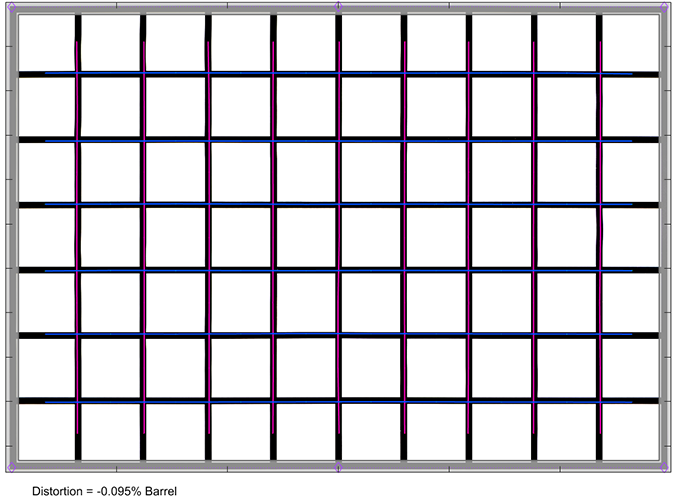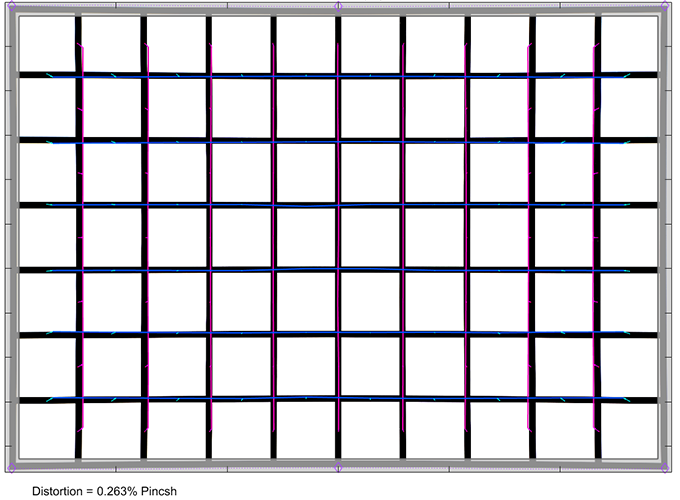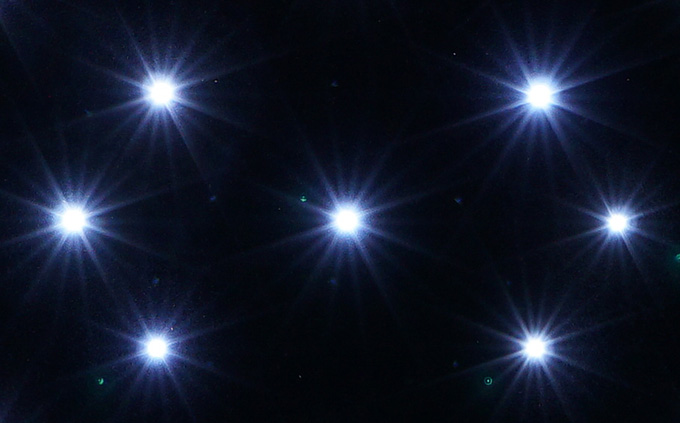Review by Klaus Schroiff, published December 2022
Introduction
Tokina was and still is a powerhouse when it comes to ultra-wide DSLR zoom lenses but things have been way too silent on the mirrorless front for too long – until now. Meet the Tokina atx-m 11-18mm f/2.8 E for Sony Alpha APS-C mirrorless cameras. In FF terms, this is roughly equivalent to “17-27mm”. Such a focal length range is perfectly aligned with landscape and architecture photography. One of the surprising aspects is its US price tag of $600 (although it costs 800EUR in Europe) – and quite a bit less than that during sales promotions (down to $400). Given its speed, this is undercutting the mainstream competition by some margin.
Tokina lenses have a long history of providing high build quality and this also applies to the atx-m 11-18mm f/2.8 E. It isn’t obvious whether Tokina used lightweight metal or some kind of compound material for the lens body but it surely feels sturdy. The focus and zoom control rings operate smoothly. The lens extends marginally when zooming to 11mm. However, it does feature an inner focusing system. Thus, the length doesn’t change during focusing. Tokina doesn’t claim to have incorporated any weather sealing. A petal-shaped lens hood is provided.

The lens uses a stepping motor (STM) auto-focusing. It’s reasonably fast and silent. As usual, manual focusing works “by wire”. The focus steps are too coarse for our liking though. The achievable maximum magnification is 1:9.2 so it’s obviously not meant for macro photography. However, the fairly large max aperture of f/2.8 makes it fast enough for some shallow depth-of-field images at close focus distances.
| Specifications | |
|---|---|
| Equivalent focal length (full-format) | “17-27mm” |
| Equivalent aperture (depth-of-field, full-format) | “f/4.2” |
| Optical construction | 13 elements in 11 groups (3x aspherical & 2x SD elements) |
| Number of aperture blades | 9 |
| min. focus distance | 0.19m (max. magnification 1:9.2) |
| Dimensions | 74×74mm |
| Weight | 335g |
| Filter size | 67mm |
| Hood | petal-shaped (bayonet mount, supplied) |
| Other features | – |
Distortion
Image auto-correction is the de-facto standard today. Activated, you don’t have to worry about image distortions as you can see below.



When looking at the RAW characteristic, things change, of course, albeit not quite as much as on some other lenses that we have seen in this market segment. At 11mm, the lens produces a medium degree (2.4%) of barrel distortion. This eases the further you zoom out with neutral results at 14mm and marginal the barrel distortion is mild at 14mm and a marginal pincushion distortion at 18mm.



Vignetting
Auto-image correction also comes to the rescue when it comes to vignetting. While the light falloff isn’t completely eliminated, it’s not disturbing anymore at around 0.6 EV (f-stops).

The original vignetting characteristic is, of course, very different. As you might expect, the most extreme vignetting is present at 11mm @ f/2.8. A vignetting of 2.4 EV (f-stops) is beyond our usual scale for APS-C lenses. The vignetting is reasonably well controlled from f/5.6 onward at this focal length setting. Longer focal lengths are generally fine with a falloff of just over 1 EV wide-open and a bit less than that when stopping down.

MTF (resolution)
With their long expertise in designing ultra-wide zoom lenses, it isn’t surprising that the Tokina atx-m 11-18mm f/2.8 E is sharp at most aperture settings. The center quality is excellent at all focal lengths from f/2.8 to f/8 and the near-center quality is just a tad behind. At 11mm the outer image field is good (albeit just) at f/2.8 and improves to very good sharpness at medium aperture settings. The wide-open performance is better at 14mm and the very high border/corner sharpness is maintained from f/4. The outer image field shows a substantial drop in quality at 18mm @ f/2.8 but improves rapidly at f/4 with impressive results from f/5.6.
Diffraction has a higher impact at f/11 although the results remain pretty usable. f/16 and beyond should be avoided – as usual.
The field curvature is marginal. The centering quality of the tested sample was Okay.
Please note that the MTF results are not directly comparable across the different systems!
Below is a simplified summary of the formal findings. The chart shows line widths per picture height (LW/PH) can be taken to measure sharpness. If you want to know more about the MTF50 figures, you may check out the corresponding Imatest Explanations

Chromatic Aberrations (CAs)
Auto-corrected lateral CA (color shadows at the image borders) are nothing to worry about as shown below.

When looking behind the scenes, the original CAs are much higher albeit not on the extreme side. In the lower focal length range, they hover around a width of 1.5px at the image borders and a bit less so at 18mm.

Sun Stars (Experimental)
Below is s sequence of images from f/4 all the way up to f/16 – illustrating the Sunstar behavior (using LED lights). Sunstars are an aperture effect when shooting bright light sources such as street lights, the sun, etc. At f/2.8, thus at maximum aperture, the effect is very underdeveloped simply because the aperture is basically circular. The Sunstar effect increases the more you stop down – until a certain setting from where it diminishes again. If you scroll through the aperture range below, you may notice that the sweet spot is between f/5.6 and f/8. The light rays are “pointy”, which is considered to be more desirable than the “fan” variant. You may also notice some lens flare effects, specifically at f/16.





Competition
The Tokina atx-m 11-18mm f/2.8 E has two primary competitors – Sony’s own E 10-20mm f/4 G and the Tamron Tamron 11-20mm 2.8 Di III-A RXD – we have yet to test these making it hard to comment. As you might expect, the Sony lens is the most expensive of this threesome – despite being the slowest lens here. In terms of resolution, it should be in a ballpark similar to the Tokina. The Tamron offers a slightly longer range but is otherwise very similar on paper. There is also the older Sony E 10-18mm f/4 OSS. It’s not fully clear whether it’s discontinued in favor of the newer E 10-20mm f/4 G though. It remains an interesting choice thanks to its OSS image stabilizer. In terms of sheer optical performance, it’s slightly inferior to the Tokina lens.
Sample Images
It's nice to see that Tokina is finally back with a new original design. And the Tokina atx-m 11-18mm f/2.8 E doesn't disappoint. Like all ultra-wide lenses, it has a few rough edges but overall, we are generally very pleased with the performance. This is especially true for the resolution chapter. With the exception of 18mm @ f/2.8, it is pretty sharp across the image field. At medium aperture settings, it even approaches greatness. Thanks to comparatively low native image distortions, image auto-correction doesn't need to work hard either - thus maintaining most of the resolution goodness. The original vignetting is very high at 11mm f/2.8 but it's reasonably well controlled at other settings and quite low with auto-correction again. Lateral CAs are an old Tokina enemy and they are indeed visible in RAW files but they represent no problem after processing. The sunstar rendering is decent at medium aperture settings. A weakness is flare in backlit situations, so better use the supplied lens hood.
The Tokina lens follows the brand's long tradition of having a very good build quality. The lens is lightweight yet doesn't sacrifice a solid feel. The control rings are very smooth. The inner lens tube extends slightly when zooming towards the wide-end - there is nothing wrong with this, but it is a little unusual in this respect. The AF is reasonably fast and it's perfectly silent. While it won't affect most users, we'd prefer finer steps of the AF motor though. As is, manual focusing via the focus-by-wire system feels somewhat coarse.
The Tokina atx-m 11-18mm f/2.8 E enters a busy market segment with lots of options to choose from. Besides being a pretty good lens to boot, it is also more affordable than most making it the value king in its class.
-
Optical Quality
-
Build Quality
-
Price/Performance


